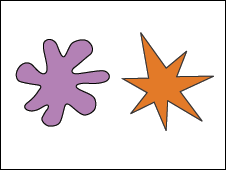
I hear a note by one of the fellows in the band and it’s one colour. I hear the same note played by someone else and it’s a different colour. When I hear sustained musical tones, I see just about the same colours that you do but I see them in textures Duke Ellington
Over 100 years ago a bizarre condition surfaced, Francis Galton (1880) reported a disorder called Synaesthesia. He noticed that some patients produced a sensation in one modality after a stimulus was applied to another. As when hearing a certain sound evokes the visualisation of a certain colour. However, Synaesthesia can come in many forms, for example the printed number ‘5’ always ‘looks’ green where as ‘2’ may ‘look’ red or every time you taste garlic you feel a square shape in your hand. Following the increased study into the condition what is more fascinating than its uniqueness is what it can teach us about the average mind.
The incredible difference in Synaesthetes is that they retain second senses vividly. As much as you might think of cold when looking at an ice cube you never actually feel it. However, in our everyday life we mix two senses, we may say the cheese tasted ‘sharp’ or her smile was ‘warm’. In much of literature you will find an array of metaphors and similes that mix two senses.
Many argue then that the disorder is just an extreme version of a quality that all humans share in. This incredible ability to map one sense to another is said to have been the base for the development of language as was demonstrated in a study by Ramachandran and Hubbard. They used two different objects and asked participants to identify which one was named ‘boobaa’ and which ‘kiki’. 95 percent identified the round blob like item as ‘boobaa’ and the sharp angular object as ‘kiki’. They then stated the reason behind this was the sharp phonemic inflections of the sounds ‘KI-KI’.

This experiment led to a landslide in literature about how humans map one completely independent cortical area to another in order to derive answers. It birthed the idea that there is a subconscious Synaesthesia that includes sensory to motor association in the human mind. Considering it in the context of language development many, not all, languages follow similar patterns, for example, in English adjectives denoting large objects contain rounded vowels and involve widening the vocal tract and lips (LARGE; HUGE; ENORMOUS). Similar patterns appear in other adjectives, by narrowing the lips when it comes to words that describe small objects (tiny; minute; miniature). We subconsciously naturally associate two unrelated senses. Something as simple as dancing, which comes naturally to most of us, is the product of us mapping our motor cortical areas against our audio sensory areas. It’s these everyday things that research into Synaesthesia has helped us garner further understanding of.
So why do some experience this phenomenon at greater intensity than most? Synaesthesia is a heritable condition, and is caused by a mutation gene that prevents the independence of certain modalities in the brain. What evolutionists discovered is that having Synaesthesia provides adaptive benefit. Synaesthesia has been linked to creativity, with the disorder more common among artists and musicians. Being creative means you are more sexually attractive since creativity indicates genetic quality. By having Synaesthesia you will benefit in regards to sexual selection. Other benefits of having Synaesthesia come in memory. Synaesthete Daniel Tammet used his associations to memorise pi to 22,514 digits. Demonstrations like this point to a link between synesthetic experiences with cognitive and perceptual anchors that help in retention of critical stimuli in the world, which would have been invaluable to our ancestors.
How does Synaesthesia work? Most research into the disorder suggest that it is likely to be a consequence of cross wiring between two independent brain regions. Fascinating stuff, considering the most common type of Synaesthesia is grapheme-colour (visual stimuli, numbers or letters with colours). The visual grapheme and colour areas both reside within the fusiform gyrus in very close proximity to one another. Meaning an increased likelihood of cross wiring between them. The closeness of these two areas is particularly prevalent in the left hemisphere which helps in explaining why the majority of synaesthetes are non-right handers, since handedness is hemisphere specific.
So why don’t we all have cross wiring in our brains? It is known that the cross wiring in the brain is a result of defective synaptic pruning between different brain areas. Developmental theories suggest that infants are born with the mixing of senses but as we get older synaptic pruning takes place until all the senses become disentangled from one another. Studies show that in the first two months of life there are wide spread cortical responses to visual and audio stimuli. When a baby hears a funny sound their eyes will open up widely, as if they are seeing sounds. This is demonstrated in the video: A baby’s response to funny noises. Their little brains are not completely pruned and separated so more than one sense is activated by one stimuli. This means that everyone has Synaesthesia in the early periods of their life but as we grow older our brain regions separate as each region becomes more specialised.
Musa Clarke